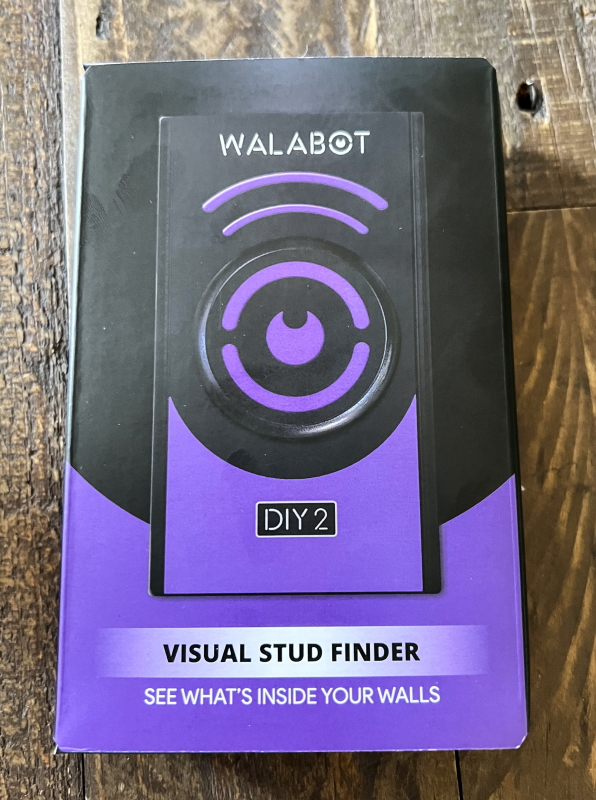
REVIEW – As I mentioned in previous reviews, I am a serious DIYer, and I make sure that I have every tool for every task. That is an expensive approach, so I am very pleased when I get the opportunity to test and review tools. Since I have been remodeling my basement including building walls with studs and putting up shelves, the Walabot DIY 2 Visual Stud Finder should be a great addition to my tool bag.
What is it?
The Walabot DIY 2 is an advanced Wall Scanner/Stud Finder for Android & iOS Smartphones. It provides the ability to find the center of wood and metal studs, to detect and track the paths of pipes and wires, and can even show movement within walls, making it ideal for exterminators.
What’s in the box
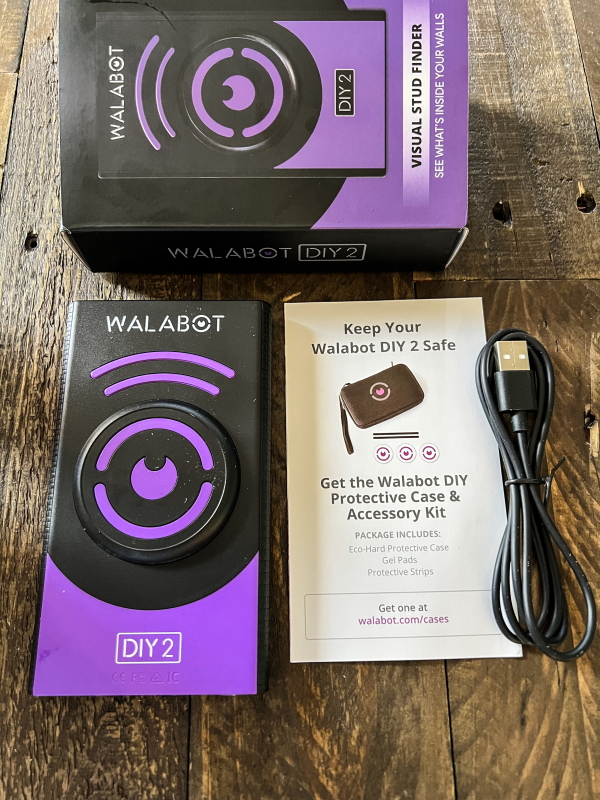 1 x Walabot DIY 2 visual stud finder
1 x Walabot DIY 2 visual stud finder
1 x USB Charging Cable
1 x User Manual
Design and features
Features
- Fully compatible with iOS and Android phones
- Extended reach: Wi-Fi connectivity – work away from your phone
- Built-in rechargeable battery – won’t drain your phone
- Enhanced product casing with smooth scanning strips
- Locates studs, stud centers, pipes, wires & pests
- Perfect for scanning drywall
- Detects objects up to 4 inches / 10 centimeters deep
- 2 scanning modes – Images and Expert
The Walabot DIY 2 is a small compact device with a footprint about the size of a smartphone. On the top, there is the name and logo and a “bump-out” circle in the middle. The other side is flat other than the two scanning strips that interface with the wall that is being scanned. On one of the thin edges, there is the power button with the LED status indicator next to it, and the USB charging port in the middle next to the power button. There is also a LED indicator next to the charging port.
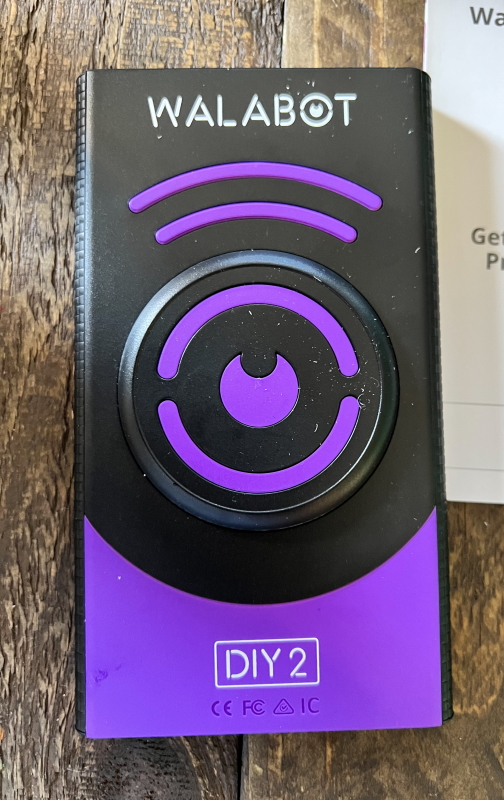
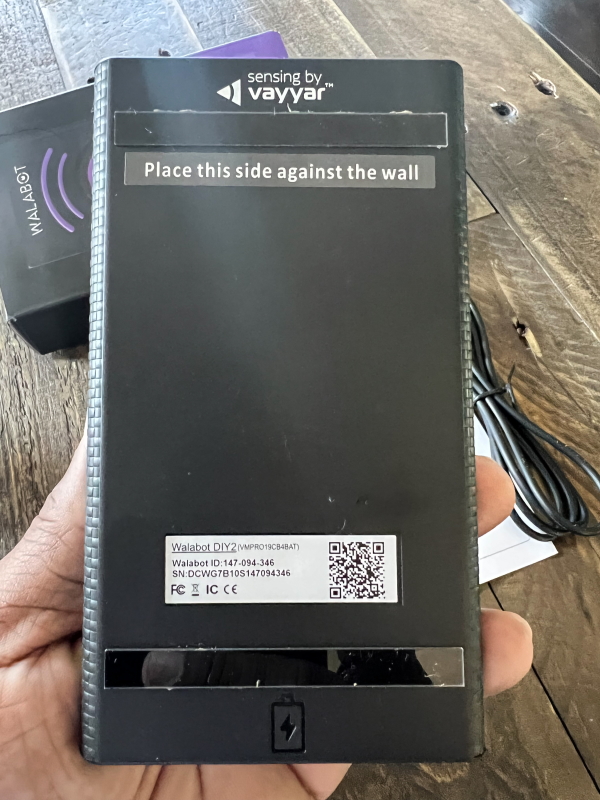

Performance
I am finishing off the construction of a pantry in a newly built laundry room and I needed to install 3 shelves. I have already framed using metal studs including framing crossbars for me to attach shelf supports. Once the sheetrock was installed and the walls were painted, it was time for me to install the shelves. I decided that this would be a good test for the Walabot to find the metal studs I had installed. Connecting the Walabot to my phone is easy. It has a built-in wifi hotspot for connectivity. So, once I fully charged it, I followed the connectivity process and it was ready to go.
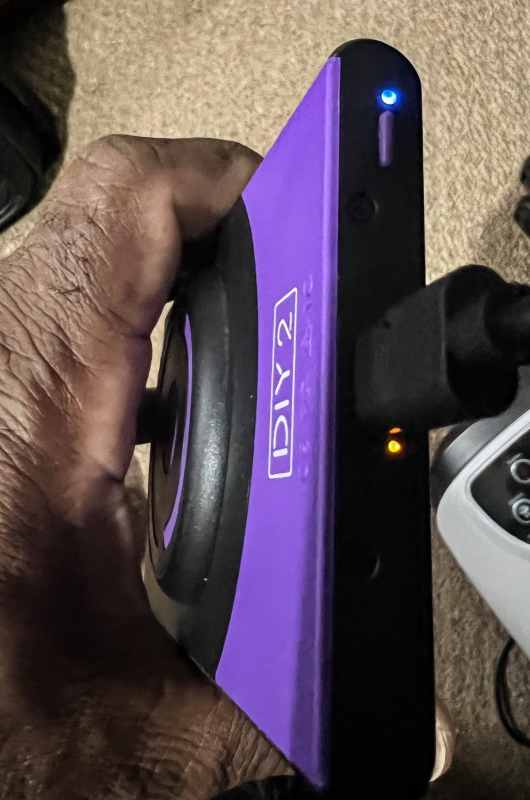
The photo below shows the space where I installed the shelves.
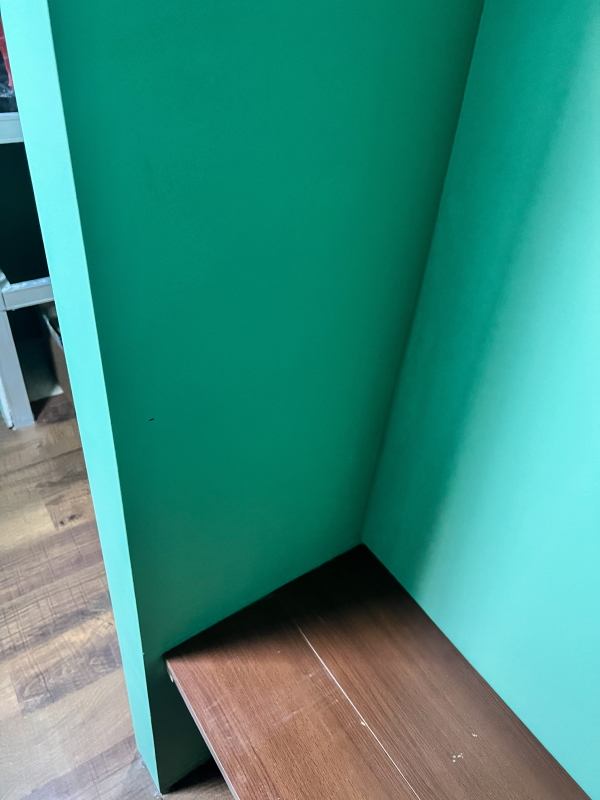
The main screens in the app show the types of materials the Walabot DIY 2 visual stud finder can work with and also the choice of Image or Expert mode.
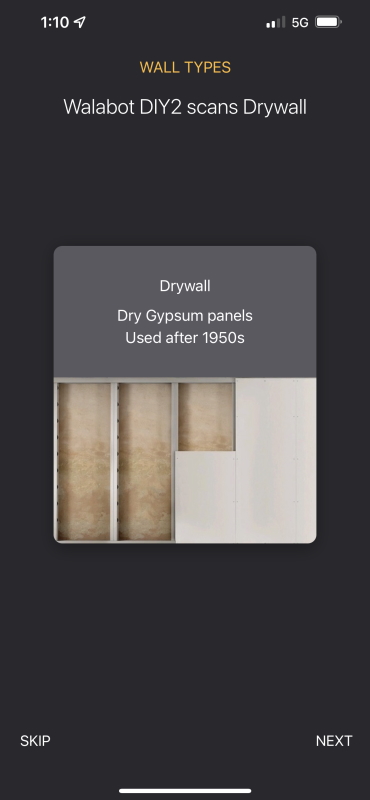
This photo shows the Walabot DIY 2 visual stud finder in Image Mode accurately identifying the metal stud in the correct location.
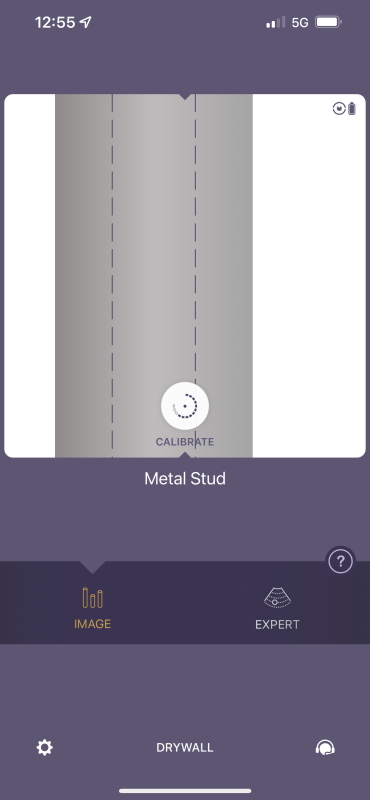
The following photo shows the view in Expert Mode also identifying the center of the wall stud.
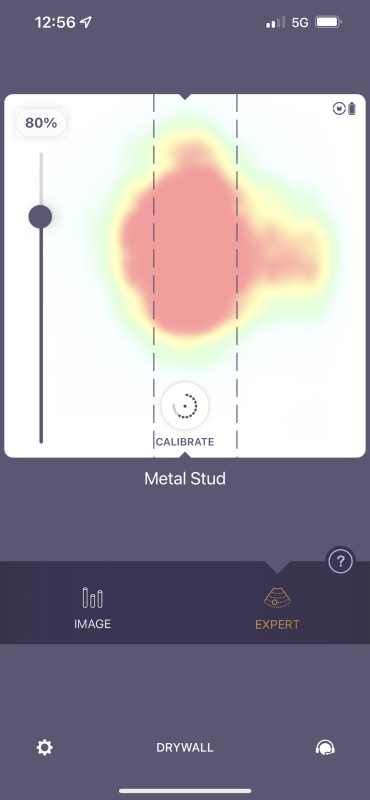
This next photo shows the Walabot identifying a wooden stud in Image mode albeit that there are no wood studs nor is there any wood anywhere in the wall.
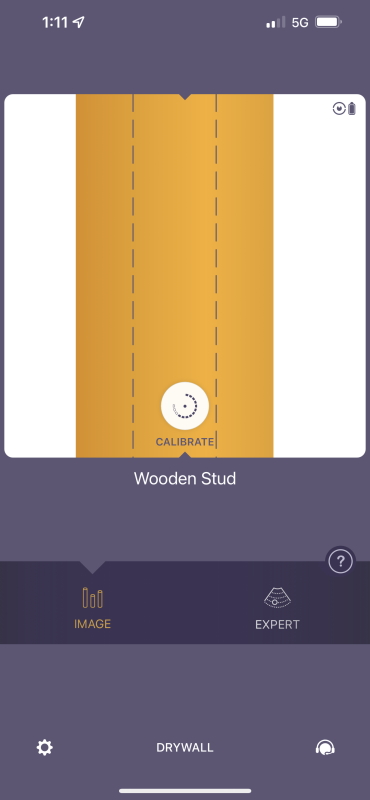
This last photo shows the successful installation of the shelves.
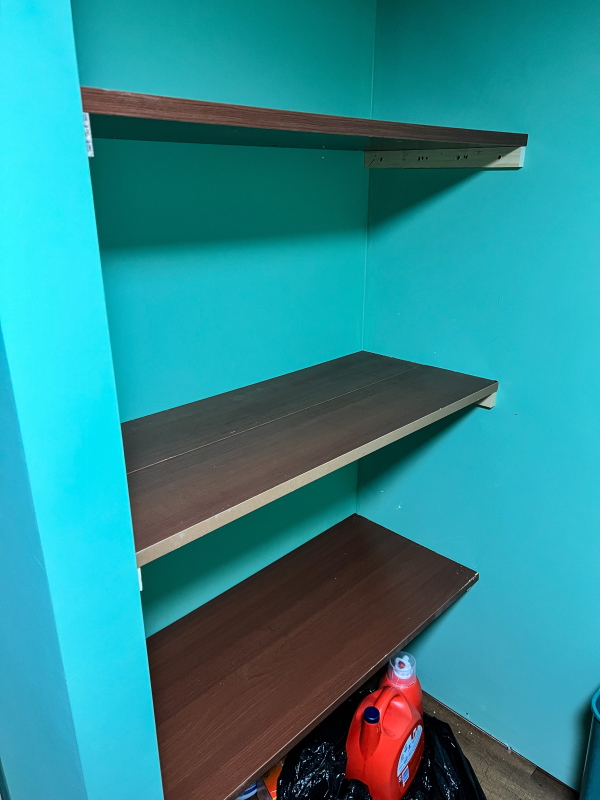
As you can see from the photos above, the Walabot DIY 2 visual stud finder was somewhat successful when identifying studs. On several occasions, it did identify metal studs as wood. Also, I do have a couple of PEX-A lines in a wall behind Rockwool insulation, and the Walabot could not see them. The mandatory process to calibrate the device each time it is used is a bit annoying, and despite the strips that are on the device to protect the wall, the device did seem to scrape my walls at times. Maybe I was pressing too hard. It would be nice if the next version had a built-in screen that shows the image right on the device eliminating the need to connect to a secondary device for visual. The built-in hotspot could remain to allow the user to provide a visual for a larger audience via a large TV screen, etc.
What I like
- That it is wireless
- That it is compact
- That it has a built-in battery
- That it can detect studs and other objects behind drywall
- That is it easy to set up for use
What I’d change
- I would add a screen on the front face so that the device becomes a standalone device
- Upgrade so that calibration is not needed each time it is powered on to be used
- Softer pads for the scanning strips, so that there can not be any damage to the surface being scanned
Final thoughts
When I first heard about the Walabot DIY 2 visual stud finder, I was really excited and felt that it would make the task of identifying studs or in the rare case for me copper pipes within the walls. After using it for about a month, I have to be honest that I am a bit underwhelmed. I think that it should be designed as a standalone device if possible, with a screen on one side and the scanning surface on the other. In addition, I lost trust in it when it started identifying my metal studs as wooden studs. This might seem like no big deal, but for me, it speaks to my overall confidence in the device that it might cause me to screw or drill into a pipe or electrical wire because of a false reading. When it does identify the studs, my simple and much cheaper stud finder appears to be just as accurate.
Price: $159.95
Where to buy: Walabot website
Source: The sample for this review was provided by Walabot.



Gadgeteer Comment Policy - Please read before commenting
we have three stud finders…cheap to too expensive
they all work…when they do
accuracy is, of course, the issue
they will all find studs but not always to the degree a of accuracy we need
one does locate power lines, as well…as long as the aren’t in conduit
it has saved us from catastrophe on occasion
sometimes i think rapping a wall with my knuckles (which i did for the first twenty years i worked) is as accurate
i liked the idea of this product until i got to the price 🙂
however we live in the hope that we’ll find something better than we have now
I had the first version of this – they’ve improved it by adding wireless connectivity, but sounds like the ability is still underwhelming.
I have the first version too, it was neat at first but only works ok on big simple walls. In the back of a closet where I know there’s cross bracing, plumbing and electrical on the other side it just found some studs and it was sporadic at best. I doubt the new one is much better. I would rather it be self contained too, I don’t need yet another app I only use a few times a year, so I have to it attached to an old phone now which is nice to if I want to loan it out.
Are you my brother from a differnt mother???
Sincerely
Richard Perry
Thank YOU for an honest review. I myself thought, “wow, this would be a great improvement over things of the past”, but now I see this is not what I thought it would be.
Thank you! I almost bought this for my husband as a gift but changed my mind after reading your review. Other reviews seem to be sponsored.
I have pex tubes spaced about 12″ apart running back and forth under my hardwood floors. I am installing a new kitchen island and definitely DO NOT want to drill or screw into the pex tubes. That would require tearing out the floor boards in order to access the pex so that I could splice it.
The pex tubes are run in 3/4″ grooves in the sub-floor and they sit inside aluminum heat spreaders that are about 5″ wide.
A friend loaned me his Walabot and I attached it to my Pixel 6 Pro. It found the metal heat spreaders and thought they were metal studs. It did not detect the pex lines, but the floor is much denser than drywall.
Because the heat spreaders are so much wider than studs, I ignored what the Walabot thought was the stud centerline, and used it to mark the edges of the heat spreaders instead. Overall I was impressed, because it allowed me to locate the hydronic lines in my floor, something that a stud finder just wouldn’t have been able to do. The key is you gotta understand what you’re looking for and be able to properly interpret what the Walabot is telling you.
The Walabot 2 is currently on sale for $120 and I think I’ma buy one.
Thanks for the review. I use the Walabot Plus and ALWAYS suspect the information provided during the scan. I tested it once with a section of a wall with active power to a switch. The Walabot showed nothing but the metal stud. Like lots of projects, one must use your brain and verify the results by measuring between studs and or looking for screw depressions in the wallboard.
It should be viewed as just another tool (an overly expensive one) in your toolbox. The lack of being able to detect Pex water lines is an issue and should be the focus of the developers for immediate updates.
Thank you for the great review. I was going to buy one but after reading an honest review, I’m going to wait until they make some improvements. Keep up the good work.
replace plastic strips with the fuzzy side of velcro. this gives you what you are looking for in protecting the surface. it also makes it work a lot better on the trendy textured walls that are use now days to hide that builders cant do smooth drywall anymore.
I think your review was quite fair and an honest opinion given without endless paragraphs of specific details of the anatomy of said device.
Quick & to the point 5💥 review.